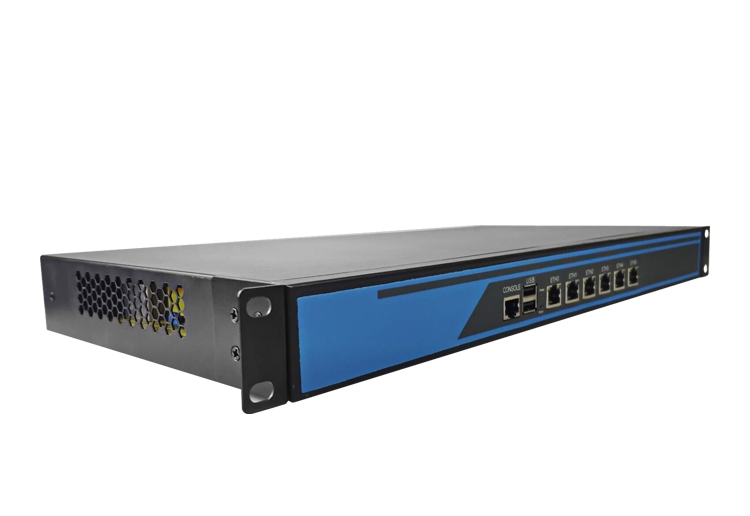What Features Should A Better Wireless Gateway Have?
2022.12.21 / By hqt
What Is The Gateway?
Everyone knows that when going from one room to another, we must pass through a door. Similarly, sending information from one network to another must pass through a “door”, which is a gateway. As the name suggests, a Gateway is a “door” through which one network connects to another. A gateway is also called an internet connector and protocol converter.
The default gateway is at the network layer for network interconnection. It is only used for the interconnection of two networks with different high-level protocols. In addition, it can be used for both WAN interconnection and LAN interconnection.
Here’s a simple example:
If you own a car, the VIN is your MAC address. The vehicle license number issued to you by the local vehicle management department (DHCP) is the IP address. If you want to drive this car to the expressway (fiber-optic backbone network), you need to get the card through the expressway toll booth (gateway).
When driving off the highway, we have to hand in our cards and pay a fee. This fee refers to the broadband fee, and there are monthly or annual subscription fees. Taking and handing in cards through the gateway is a conversion of protocols and a conversion of speed.
What is the Wireless Gateway?
The wireless gateway is a device that connects you to the internet. It is usually located at home or in the office, but it can also be used for public access.
The gateway is connected to a broadband connection such as an Ethernet cable or DSL, which means that you have an IP address and can send information anywhere in the world.
A Better Wireless Gateway From Sailsky:
A wireless gateway, such as the ZK1060F from Sailsky, can have a variety of useful functions for users. Some of these functions may include:

Integrated AC management:
This allows the wireless gateway to manage and control connected AC devices.
This wireless gateway can realize the effect of an AC controller, which will save the cost of independent purchase of AC equipment for small and medium-sized enterprises. Therefore, it is very suitable for the application of medium and large enterprises.
Built-in intelligent channel analyzer:
The wireless gateway can automatically analyze and select the best wireless channel for optimal performance and reduced interference. It can also automatically scan and analyze the wireless environment to find the best channel for optimal performance. This ensures that your wireless network is always running at peak performance.
Load balancing Of the Multi-WAN and multi-WAN port:
The wireless gateway can automatically balance the load of multiple WANs and multiple WAN ports, which will effectively improve the stability and speed of your network.
Access End Users QTY Max 1000+:
This refers to the maximum number of end users that the wireless gateway can support at once, allowing multiple devices to connect and access the network simultaneously.
This is a great option for large enterprises. Because these enterprises will have a large number of equipment and employees need to use the network.
Allows cloud platform access and authentication:
The wireless gateway can provide access to a cloud platform, allowing users to remotely monitor and control their network and connected devices, as well as securely authenticate and manage user accounts.
You can authenticate through various methods such as WeChat and SMS. This makes your wireless gateway easier to use and manage.
In addition to the functions mentioned above, a wireless gateway can also provide other useful features, such as advanced networking capabilities, support for multiple wireless protocols, and customizable settings and configurations.
Overall, a good wireless gateway should offer a combination of basic and advanced functions to provide users with a convenient, reliable, and secure network connection.
Why Do You Need A Better Wireless Gateway In Your Company?
If there is no gateway, then the employees who are working in your office will not be able to access the internet. It is necessary for each and every employee to be connected with the company network. Therefore, it is important for you to install a wireless gateway in your office so that it can be accessible to all employees.
There are many benefits of installing a wireless gateway at your workplace which include:
1. It saves money:
Installing a wireless gateway can help you save money as it helps to reduce the cost of installation. This is because you don’t need to spend extra money on installing new wires or cables for the network connection.
2. It increases productivity:
Installing a wireless gateway at your workplace can help increase the productivity of all employees. This is because they will be able to access and share information from anywhere within the premises.
3. It provides security to confidential data:
Installing a wireless gateway can help to provide security for your confidential data. This is because it has the ability to encrypt all network traffic using the CAPWPA security protocol.
4. It’s easy to manage:
Installing a wireless gateway in your workplace is easy as it comes with an easy-to-understand meta-platform. This makes it easier for you and other employees to manage the network.
How To Install Your Wireless Gateway?
To install your wireless gateway, you will need to follow these steps:
- Locate the wireless gateway in an open area away from any large metal objects or appliances that could interfere with the signal.
- Connect the power cord to the wireless gateway and plug it into a power outlet.
- Connect the coaxial cable from the wall to the “Cable In” port on the back of the wireless gateway.
- Turn on your computer or device and wait for it to boot up.
- Follow the on-screen instructions to complete the setup process for your wireless gateway. This may include entering your username and password, as well as selecting your wireless network name and password.
- Once the setup is complete, your wireless gateway should be ready to use. You can connect your other devices to the wireless network by following the on-screen instructions or by referring to the user manual for your wireless gateway.

